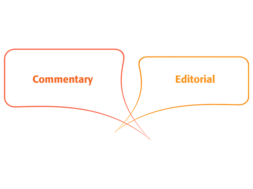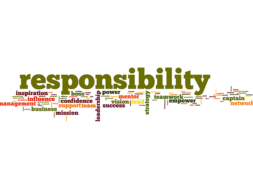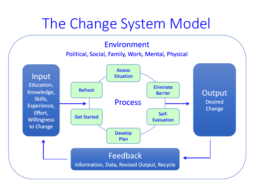
High School Diploma Mill Can of Worms Coming to Your School?
By Glenn Bogart, J.D.
Right now I am working on my second program review case where the U.S. Department of Education is seeking to make the school pay back thousands of dollars in federal student aid it disbursed to students having high school diplomas from suspect schools, or “schools,” if you prefer.
In both cases, I suspect the program reviewers had written the finding before they even came for the campus visit.
In the more recent case, the school had about 450 federal student aid recipients over the two years covered by the program review.
In their “random” sample of 30 files, the reviewers managed to find four high school diplomas that, in the words of the program review report, “may be invalid.”
That’s a little more than 13 percent, which is enough to order the school to review all its students to find out how many more such diplomas served as the basis for students’ admission. (The Department defines an invalid high school diploma as one which the student “bought,” and for which the recipient performed little or no work.)
We’ve finished the file review for this attribute, and found a total of 43 suspect diplomas. That’s a little less than 10 percent of the population. If the program reviewers had found 10 percent or fewer problems, no file review would have been ordered. For purposes of this file review, we started by identifying all high schools from which students in the population claimed to have graduated which were not known to be legitimate by the local reviewers. Then we examined these schools’ internet websites, and considered “questionable” any school that mentioned a flat fee for a diploma, contained disclaimers regarding the acceptability of the diploma by employers or colleges, or were just plain funky.
Now, FAFSA applicants are asked to name the high school from which they graduated, and most of them do. Presumably it would be quite simple for the Department to print out a list of FSA applicants at a particular school who listed high schools like Continental Academy, Columbus Academy, and Cornerstone Christian Correspondence School (used as examples here because the administrative case law calls them diploma mills), and then make sure there are enough of them in the program review sample to ensure that a file review will be “appropriate.” Sure, they say their samples are truly random, but how do we know that’s the truth? Personally, I don’t trust them…
We know the Department of Education can easily produce a list of students at any school who reported having graduated from suspect schools. The information is right there on the ISIRs.
I wonder why they don’t do that for, say, Miami-Dade College or your local community college, then just send them a final program review determination telling them to pay back all the federal student aid these students received. Why, instead, are they doing this one school at a time, mostly (or maybe entirely) at proprietary schools?
Maybe it’s because, for state-supported community colleges, the Department just doesn’t want to know. Put me in charge there, and I could issue 500 final determination letters to community colleges demanding repayment of $150 million within a month or two, simply by searching their ISIRs for known diploma mills. That’s what would happen if the Department of Education really cared about collecting liabilities for bad high school diplomas.
Anyway, what do you do if you end up with a program review finding regarding “bad” high school diplomas? If just a couple of students are involved, maybe you just shut up, and pay up. After all, you can’t die in every ditch.
But what if a dozen or more students are involved, and the liabilities are more than you can pay comfortably (or, at all)? Well, then you fight. You have to.
I can’t give away all my tricks and still earn a living – and truthfully, those tricks have not yet been tested in a final program review determination appeal that made it to an administrative judge’s decision, so I don’t know whether they’ll work or not. We settled the only one that has gotten close to that point. The other one is a year away from a decision. No telling whether my brilliant ideas on this will get a school relieved of liability, at this point. And, as said, I can’t give away the whole store. But I can give you a couple of hints.
First, look carefully at the words in the program review report. Chances are, they’re weasel words. “Suspect.” “Possibly invalid.” “Questionable.” Why don’t they just come right out and say “invalid” or “phony” or “unacceptable?” Well, I think that’s because they know they are on shaky ground.
How shaky? Well, look at the guidance they have provided in the Federal Student Aid Handbook. Some of it is pretty amusing. And none of it gives anyone the final answer on how a school is supposed to determine whether a high school diploma from an online school is acceptable or not, in the absence of special knowledge of a particular situation. “You might want to do this;” and “Cooperate with other schools in developing lists of high school diploma mills.” You won’t find a list of schools whose high school diplomas are unacceptable in the FSA Handbook or a Dear Colleague Letter. If they don’t know, how are we supposed to know?
As is often the case, the Department’s guidance on this is designed to cover their own butts, not to help you comply.
The case law is clear on only one thing. If the school knew or should have known, that it was accepting high school diplomas from phony schools, it’s liable. Indeed, I could name a couple of owners who are now guests in federal prisons as a result of knowingly accepting bad high school diplomas for federal student aid purposes. I served as an expert witness for one of them. (Whether my efforts reduced his sentence or added to it is anybody’s guess.)
But I digress.
If you didn’t know and didn’t have reason to believe a diploma was no good, you can still appeal a final program review determination on this and have a chance of winning, at this point in the development of the administrative law.
In other words, as yet there are no decisions from the Office of Hearings and Appeals which make this a strict liability situation (i.e., decisions which say that it doesn’t matter whether you knew the diploma was bad or not – if it’s bad, you still lose). So at this point, there is still some hope for success on appeal.
Throw their mealy-mouthed “guidance” in their faces. Then pray that your administrative judge takes his or her responsibilities as a neutral judge seriously, and doesn’t just rubber-stamp whatever nonsense the Department dishes out in its brief. It’s an uphill battle, but it’s worth it if your survival is at stake.
The views expressed by contributors are their own and not the views of CER.
GLENN BOGART, J.D. is a Title IV compliance consultant who specializes in school compliance reviews and Department of Education program review responses and appeals. A former ED program review officer, he holds a bachelor’s degree in government from Southern Illinois University, and earned the Juris Doctor degree at Western New England University in 1986. He resides in Birmingham, Alabama, but travels all over the U.S.
Mr. Bogart started his consulting business in 1992, after having served briefly as director of internal audit and compliance at Phillips Colleges, Inc., and prior to that as corporate vice president for financial aid for another large group of proprietary schools. Over the years, he has contributed frequently to these pages.
Contact Information: Glenn Bogart, J.D. // 3216 Buck Horn Cove // Birmingham, AL 35242 // 205-249-5453 // glennbogart@aol.com // www.glennbogart.com








